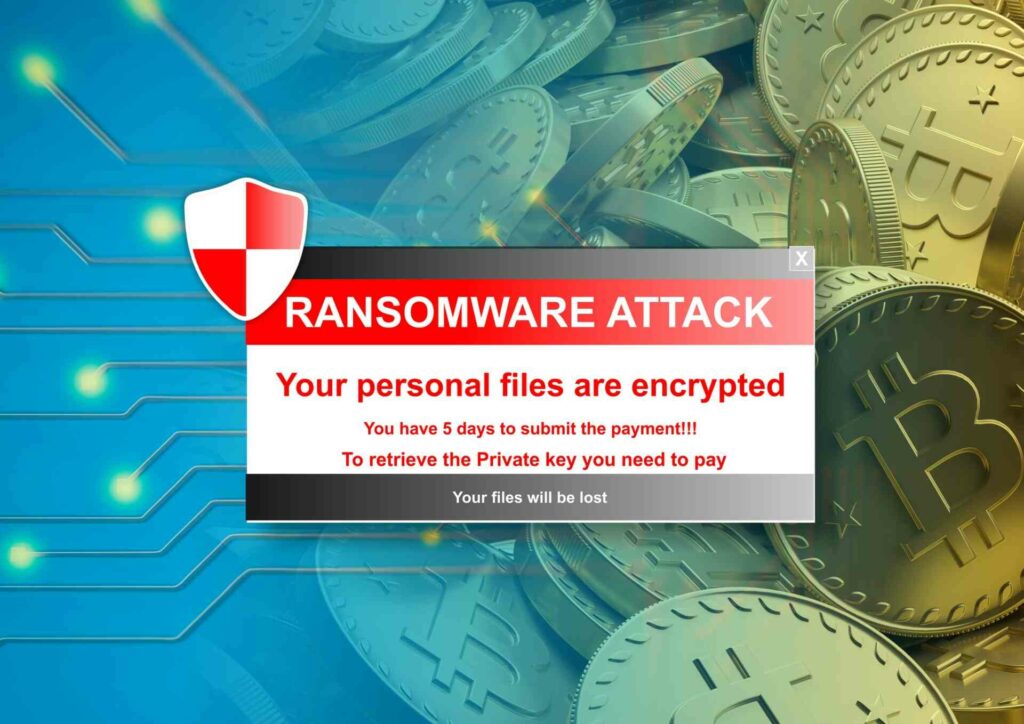Ransomware attacks have become increasingly sophisticated and widespread, targeting organizations of all sizes and industries. Cybercriminals often exploit vulnerabilities in software, phishing emails, or insecure remote access to gain unauthorized access to corporate networks. Once inside, they deploy ransomware to encrypt critical data, leaving businesses unable to access vital information until a ransom is paid.
The Impact on Businesses:
The impact of ransomware attacks on businesses can be devastating, affecting not only financial resources but also operational continuity and customer trust. Some of the key consequences include:
- Financial Losses: Ransom demands can range from thousands to millions of dollars, depending on the size and significance of the target. Paying the ransom may result in immediate financial losses, while refusing to pay can lead to prolonged downtime and recovery costs.
- Operational Disruptions: Ransomware attacks can disrupt business operations, causing downtime, productivity losses, and service interruptions. This can have cascading effects on supply chains, customer service, and revenue generation.
- Data Loss and Theft: In addition to encrypting data, ransomware attacks may also involve data theft or exfiltration, exposing sensitive information to unauthorized parties. This can result in regulatory fines, legal liabilities, and damage to brand reputation.
- Reputational Damage: The public disclosure of a ransomware attack can damage a company’s reputation and erode customer trust. Stakeholders may perceive the organization as incompetent or negligent in protecting sensitive data, leading to loss of business and credibility.

Prevention Strategies:
Preventing ransomware attacks requires a proactive and multi-layered approach to cybersecurity. Some key prevention strategies include:
- Employee Training: Educating employees about cybersecurity best practices, such as recognizing phishing emails, avoiding suspicious links, and updating software regularly, can help prevent ransomware infections caused by human error.
- Patch Management: Keeping software and systems up-to-date with the latest security patches is essential for addressing vulnerabilities that could be exploited by ransomware attackers.
- Network Segmentation: Segmenting network infrastructure to limit the spread of ransomware can help contain infections and minimize the impact on critical systems and data.
- Endpoint Security: Deploying endpoint security solutions such as antivirus software, intrusion detection systems, and endpoint detection and response (EDR) tools can help detect and mitigate ransomware threats targeting endpoint devices.
- Backup and Recovery: Implementing regular data backups and disaster recovery plans is essential for recovering from ransomware attacks. Backups should be stored securely and tested regularly to ensure data integrity and availability.
Recovery Strategies:
In the event of a ransomware attack, organizations should follow established incident response procedures to minimize the impact and facilitate recovery. Some key recovery strategies include:
- Incident Response Plan: Having a comprehensive incident response plan in place is essential for guiding the organization’s response efforts, coordinating stakeholders, and restoring operations as quickly as possible.
- Communication and Transparency: Maintaining open and transparent communication with internal stakeholders, external partners, and regulatory authorities is crucial for managing the fallout of a ransomware attack and preserving trust.
- Ransom Negotiation (if necessary): While not recommended, some organizations may choose to negotiate with ransomware attackers to retrieve encrypted data. Engaging with experienced ransomware negotiation experts can help navigate this process and minimize ransom payments.
- Forensic Analysis: Conducting forensic analysis of the ransomware attack can help identify the root cause, assess the extent of the damage, and implement measures to prevent future incidents.
- Post-Incident Review: After the ransomware attack has been mitigated, conducting a post-incident review is essential for identifying lessons learned, improving incident response procedures, and enhancing cybersecurity defenses.
Conclusion:
Ransomware attacks pose a significant threat to businesses, with potentially devastating consequences for financial stability, operational continuity, and brand reputation. By implementing proactive prevention strategies and establishing robust recovery plans, organizations can strengthen their defenses and mitigate the risk of falling victim to ransomware attacks. With Netcotech’s expertise in cybersecurity and incident response, businesses can navigate the complexities of ransomware threats with confidence and resilience, safeguarding their valuable assets and ensuring business continuity in an increasingly digital world.